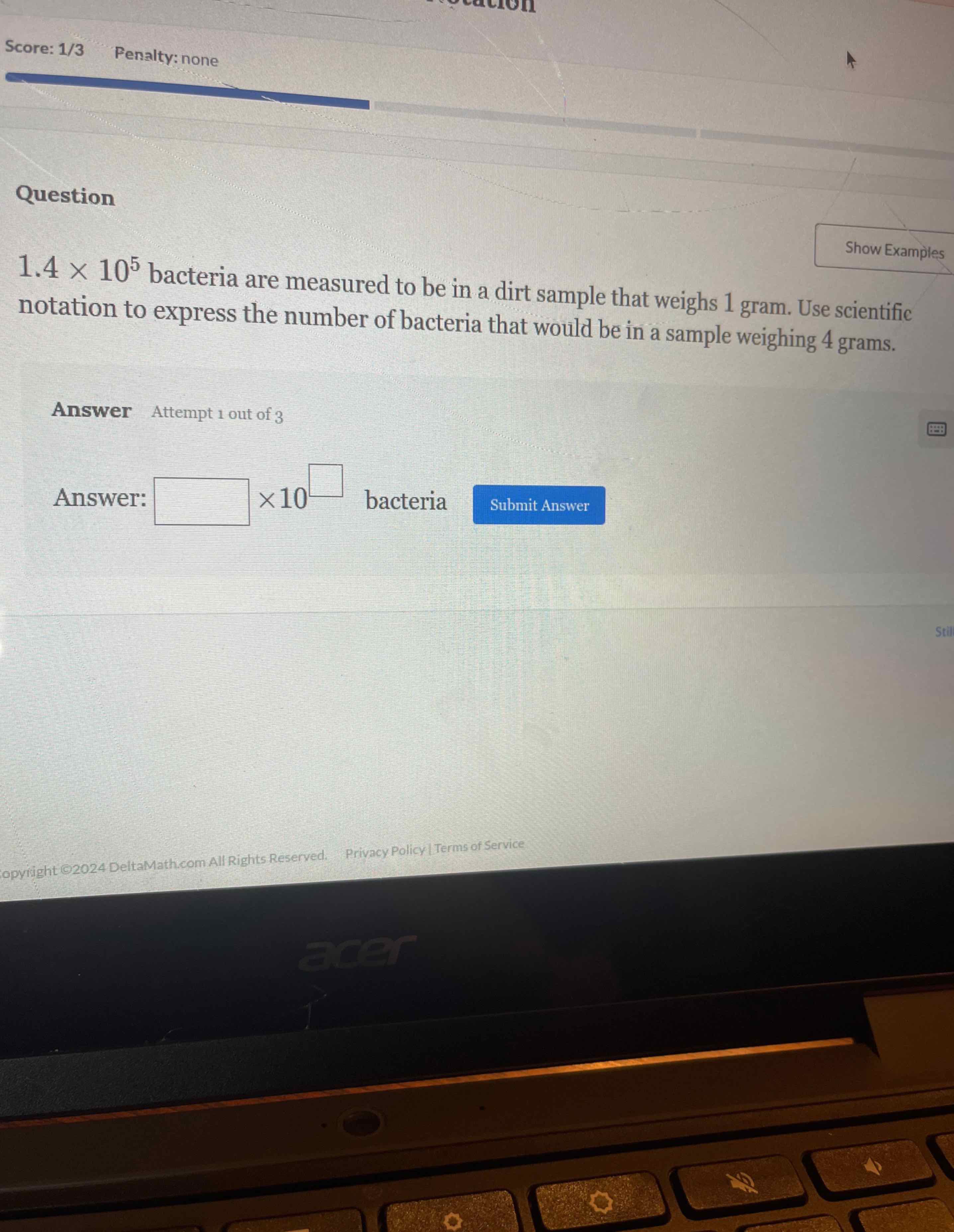AI tutor
Welcome to Bytelearn!
Let’s check out your problem:

Score: /Penalty: noneQuestion bacteria are measured to be in a dirt sample that weighs gram. Use scientific notation to express the number of bacteria that would be in a sample weighing grams.Answer Attempt out of Answer: bacteriaSubmit Answeropyright DeltalMathcom All Rights Reserved. Privacy Policy ITerms of Service
Full solution
Q. Score: /Penalty: noneQuestion bacteria are measured to be in a dirt sample that weighs gram. Use scientific notation to express the number of bacteria that would be in a sample weighing grams.Answer Attempt out of Answer: bacteriaSubmit Answeropyright DeltalMathcom All Rights Reserved. Privacy Policy ITerms of Service
- Calculate Bacteria per Gram: Calculate the number of bacteria per gram by dividing the total bacteria by the weight of the sample.
- Find Total Bacteria in Sample: Multiply the bacteria per gram by the new sample weight to find the total bacteria in a gram sample.
More problems from Scale drawings: word problems
QuestionGet tutor help
QuestionGet tutor help
QuestionGet tutor help
QuestionGet tutor help
QuestionGet tutor help
QuestionGet tutor help
QuestionGet tutor help
